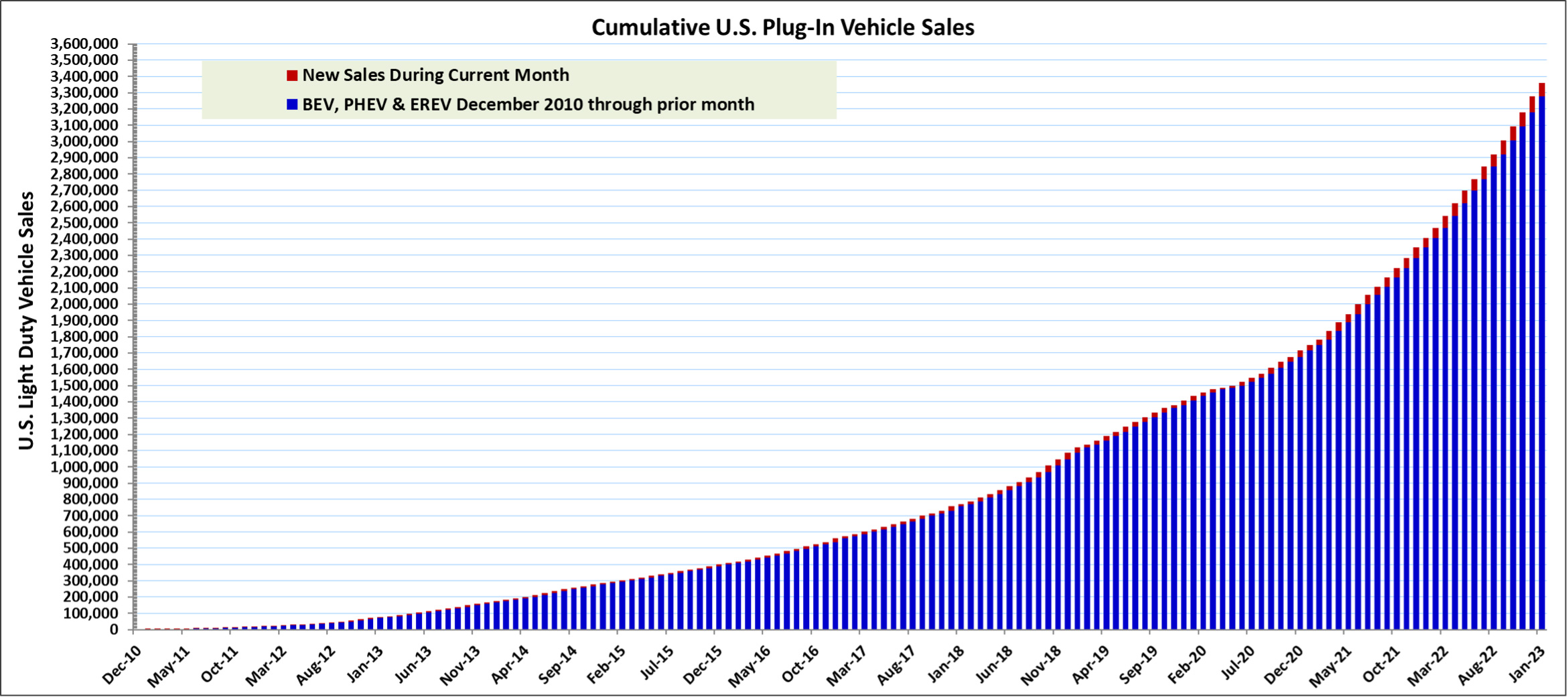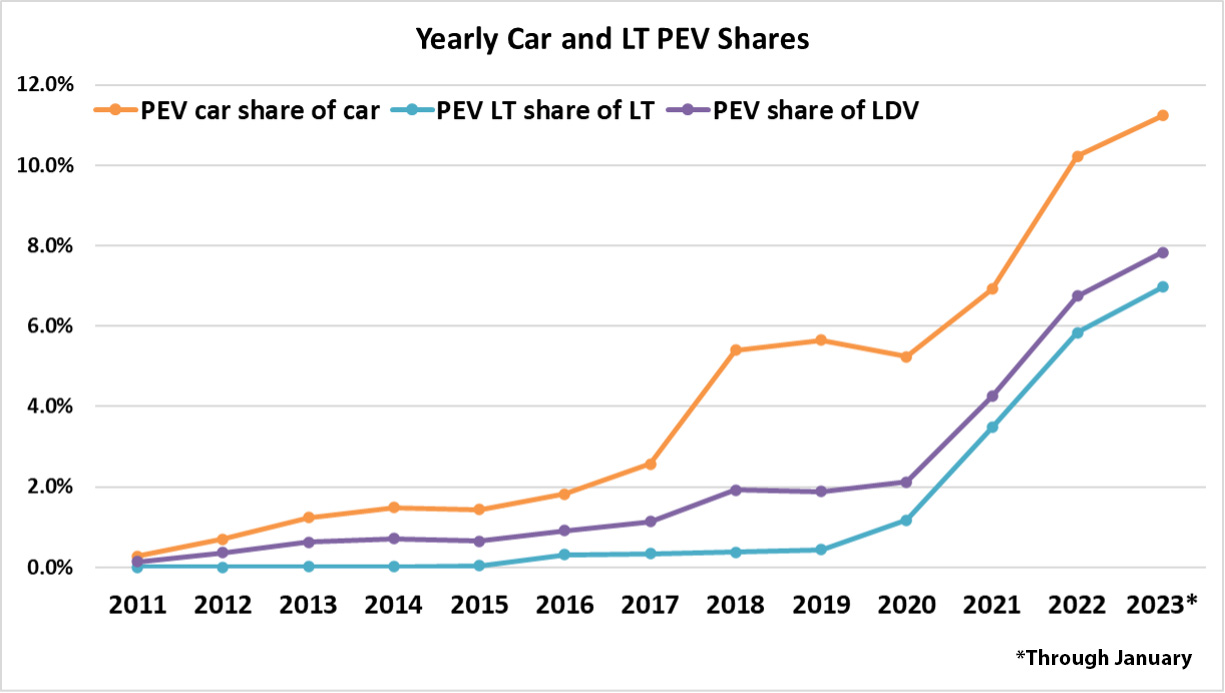About two-thirds of our respondents said that states shouldn't pass these kinds of laws. But only 51% percent of Democrat-voting respondents said states shouldn't require the phasing out of gas-powered vehicles (76% of Republican-voting respondents said the same).
The future of hybrid and electric vehicle manufacturing
Consumers are warming up to EVs -- but what about manufacturers? What are their plans for their EV fleets?
In general, car makers are looking to amp up their electric vehicle production. A few have even committed to releasing only EVs within the next decade. Here are seven companies' goals, as reported by the International Energy Agency:
- BMW (OTC:BMWYY) (BAMXF -4.58%): Half of vehicles sold to be fully electric by 2030 or earlier.
- Ford: One-third of sales to be fully electric by 2026 and half by 2030. All European sales electric by 2030.
- GM: Offer 30 EV models and have BEV production capacity of 1 million units in North America by 2025.
- Daimler's (MBGY.Y -2.49%) Mercedes: All newly launched vehicles to be fully electric by 2025.
- Toyota: Sell 3.5 million electric cars annually by 2030. Offer 30 BEV models by 2030.
- Volkswagen (VWAGY -1.36%): All-electric vehicles to exceed 70% of Chinese sales, 50% of American sales, and 50% of European sales by 2030.
- Volvo, owned by Geely Automobile Holdings Limited (GELYF -0.66%): Become a fully electric car company by 2030.
Consumer Reports also provides a detailed breakdown of 17 different North American car manufacturers and their plans, goals, and projections when it comes to EVs.
While it remains to be seen whether these companies will hit their goals, it's clear that a large portion of the auto industry will be electrified by 2030. It's worth noting that none of these plans are binding -- GM has already announced a slight delay in its goals because of slower-than-expected production of batteries.
While increasing demand for EVs undoubtedly plays a role in these electrification goals, governmental priorities have also likely encouraged companies to electrify.
Governments continue to push for electric vehicles
Governments around the world, from individual states in the U.S. to multinational declaration signatories, have pledged to shift the balance of vehicles toward electric.
For example, California is investing $10 billion to eliminate all non-zero-emission vehicle sales by 2035. Almost all states have some form of policy promoting electric vehicles. These can include tax credits, rebates, and registration fee reductions.
And according to the National Conference of State Legislatures, at least 13 states (California, Colorado, Connecticut, Maine, Maryland, Massachusetts, New Jersey, New York, Oregon, Rhode Island, Virginia, Vermont, and Washington) as well as the District of Columbia have followed California in requiring manufacturers to sell a certain number of zero-emission vehicles annually.
Related EV and automotive topics


